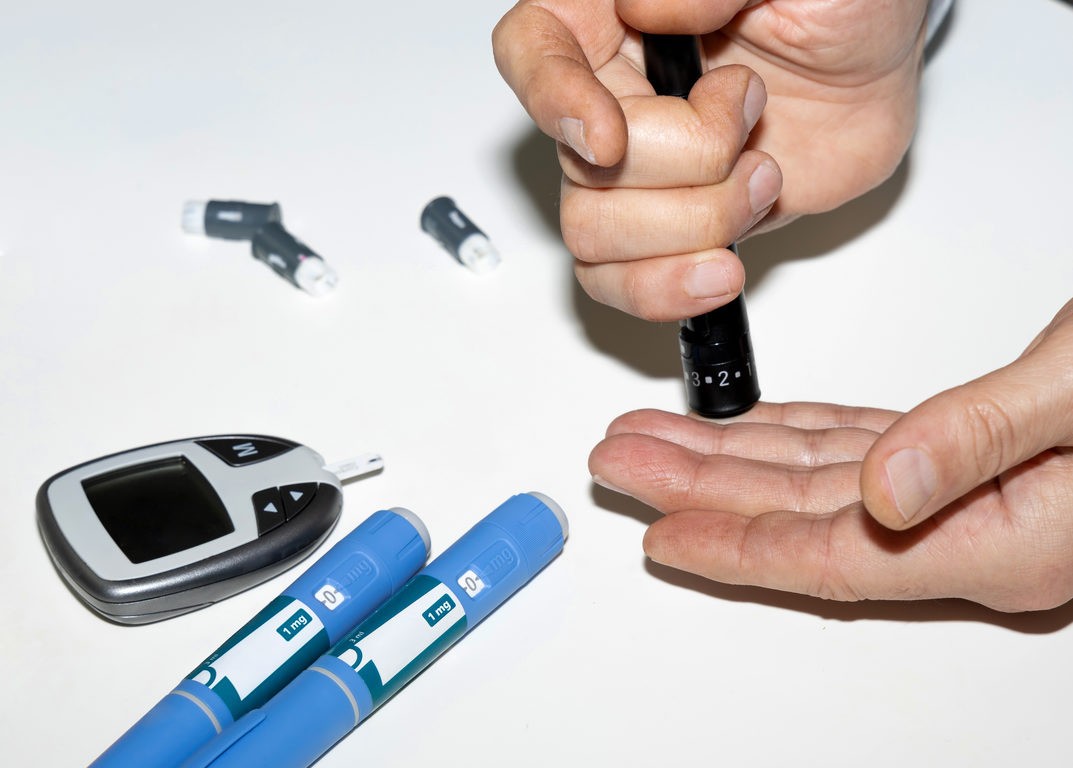Ozempic to Mounjaro Conversion Chart – A Comprehensive Guide for Diabetes Management
When managing type 2 diabetes, finding the right medication can make a significant difference in both blood sugar control and overall health. Many people are prescribed Ozempic (semaglutide) but are considering switching to Mounjaro (tirzepatide) due to its dual-action benefits. However, converting dosages between these medications is not straightforward, and careful planning is needed.
This article provides a detailed Ozempic to Mounjaro conversion chart, an overview of both medications, and guidance on how to make a safe and informed transition.
Understanding Ozempic and Mounjaro: What Are They?
What is Ozempic (Semaglutide)?
Ozempic is a GLP-1 receptor agonist, a class of medications commonly prescribed for people with type 2 diabetes. Developed by Novo Nordisk, Ozempic works by:
- Enhancing Insulin Production: Ozempic stimulates the pancreas to release more insulin in response to food, which helps to reduce blood sugar levels after meals.
- Reducing Glucose Production: The liver produces glucose even when blood sugar levels are high, and Ozempic helps reduce this overproduction.
- Slowing Gastric Emptying: By slowing down the digestive process, Ozempic helps prevent spikes in blood sugar after meals, creating a more gradual release of glucose into the bloodstream.
What is Mounjaro (Tirzepatide)?
Mounjaro, created by Eli Lilly, is a new diabetes medication that combines two mechanisms: GLP-1 and GIP (Glucose-dependent Insulinotropic Polypeptide) receptor agonism. These two mechanisms work together to provide more comprehensive blood sugar control and support weight loss. Its effects include:
- Dual Hormone Action: Unlike Ozempic, Mounjaro targets both GLP-1 and GIP receptors, which results in a synergistic effect on blood sugar control and satiety.
- Improved Insulin Sensitivity: Mounjaro helps the body respond better to insulin, an effect that is further enhanced by the GIP component.
- Enhanced Weight Loss: The combined effect of GLP-1 and GIP often leads to better appetite control, promoting weight loss that benefits diabetes management and overall health.
Mounjaro is currently approved only for type 2 diabetes, but it has gained attention for its potential in treating obesity and other metabolic conditions.
Why Consider Switching from Ozempic to Mounjaro?
Many patients with type 2 diabetes consider switching from Ozempic to Mounjaro for several reasons:
- Greater Efficacy: Clinical trials have shown that Mounjaro can lead to superior glycemic control compared to Ozempic. Many patients experience improved blood sugar levels and more significant weight loss with Mounjaro, which can be beneficial for long-term health.
- Enhanced Weight Management: Due to its dual action, Mounjaro often provides a more pronounced effect on weight loss, which is a key factor in managing type 2 diabetes. Weight loss can also help reduce insulin resistance, a core issue in type 2 diabetes.
- Different Side Effect Profiles: Some patients experience side effects with Ozempic that they do not experience with Mounjaro. Switching medications can provide an alternative approach that may reduce certain side effects.
- Insurance Considerations: In some cases, insurance coverage may vary between these medications. Mounjaro could be more affordable depending on an individual’s insurance plan and prescription benefits.
Ozempic to Mounjaro Conversion Chart: Dosage Guide
When transitioning from Ozempic to Mounjaro, it’s essential to match the dosage as closely as possible to avoid fluctuations in blood sugar levels. Below is a general guideline for dosage conversion:
| Ozempic Dose (mg) | Approximate Mounjaro Equivalent Dose (mg) |
| 0.25 | 2.5 |
| 0.5 | 5 |
| 1.0 | 10 |
| 1.5 | 15 |
| 2.0 | 20 |
Disclaimer: This chart provides an estimated equivalence but should not replace professional medical advice. Always consult with a healthcare provider before adjusting any dosages or switching medications.
Explanation of Dosage Equivalencies
While there’s no exact conversion formula between Ozempic and Mounjaro, the chart above provides a reference based on common practice and comparable effects on blood glucose levels. Ozempic dosages are generally lower due to its specific action on GLP-1 receptors alone, whereas Mounjaro’s dual action may require slightly different dosing to achieve similar effects.
Safe Transition Steps: How to Switch from Ozempic to Mounjaro
Switching medications should be done with care. Here’s a step-by-step process to make the transition as smooth as possible:
- Discuss with Your Healthcare Provider: Bring up the idea of switching with your doctor, discussing why you want to make the change, any side effects you’re experiencing, and what you hope to achieve with Mounjaro.
- Evaluate Your Current Health Status: If you’re already experiencing well-controlled blood glucose levels with Ozempic, a gradual switch may be needed. Patients with higher A1C levels or specific weight loss goals may follow a different transition plan.
- Follow the Dosage Conversion Chart: Use the chart to identify an approximate starting dose. Your doctor may suggest starting at a lower dose and gradually increasing it to minimize side effects.
- Monitor Blood Glucose Levels Closely: Especially during the first few weeks of the switch, regularly check your blood glucose levels to ensure the new medication is effective and well-tolerated.
- Adjust as Necessary: Your healthcare provider may need to adjust your dosage over time based on your body’s response. In some cases, a higher or lower dose may be needed than initially anticipated.
Comparing Side Effects: Ozempic vs. Mounjaro
Both Ozempic and Mounjaro have side effects, and understanding the similarities and differences can help you make an informed choice.
Common Side Effects of Ozempic
- Nausea: Many users report nausea, especially during the first few weeks of treatment.
- Vomiting: While less common, some individuals experience vomiting, particularly when the dosage is increased.
- Constipation or Diarrhea: Changes in bowel movements are typical, as Ozempic impacts digestion.
- Abdominal Pain: Some patients may feel mild to moderate stomach pain.
Common Side Effects of Mounjaro
- Nausea and Vomiting: These side effects can be similar to those of Ozempic, but may vary in intensity.
- Diarrhea and Constipation: Digestive effects are also common with Mounjaro.
- Decreased Appetite: The dual action on GLP-1 and GIP receptors may lead to more pronounced appetite reduction.
- Injection Site Reactions: Some people report mild redness or discomfort at the injection site.
Comparison of Long-Term Side Effects
- Potential for Pancreatitis: Both Ozempic and Mounjaro have a risk of pancreatitis, which requires immediate medical attention.
- Thyroid Tumor Warning: Both medications carry a warning for potential thyroid tumors, especially in patients with a family history of thyroid issues.
Managing Side Effects During Transition
If you experience side effects during the transition, consider eating smaller, frequent meals to reduce nausea or stay hydrated to ease digestive issues. Always report severe or persistent side effects to your healthcare provider.
Frequently Asked Questions
1. Is it safe to switch from Ozempic to Mounjaro on my own?
No, it’s essential to work closely with a healthcare provider when switching medications to ensure safety and efficacy.
2. Can I take both Ozempic and Mounjaro at the same time?
Taking both medications simultaneously is generally not recommended, as they act similarly and could increase the risk of side effects. However, only your doctor can provide specific guidance.
3. How long does it take for Mounjaro to start working?
Many patients notice blood sugar control within a few weeks, but full effects may take a few months. Weight loss effects also vary but tend to increase over time with consistent use.
4. Does Mounjaro work better for weight loss than Ozempic?
In clinical trials, Mounjaro has shown greater potential for weight loss compared to Ozempic, likely due to its dual action on GLP-1 and GIP receptors.
5. Is Mounjaro covered by insurance?
Coverage varies by plan and location. Some insurance plans cover Mounjaro, but others may require prior authorization or additional information.
6. What should I do if I miss a dose during the transition?
If you miss a dose, take it as soon as you remember. If it’s close to the next scheduled dose, skip the missed dose and resume your regular schedule.
7. How often do I need to take Mounjaro?
Like Ozempic, Mounjaro is typically taken once weekly, but specific schedules and dosages should be determined with your healthcare provider.
Final Thoughts on the Ozempic to Mounjaro Conversion
Switching from Ozempic to Mounjaro can be a beneficial choice for many patients seeking improved blood sugar control and weight loss. However, the transition requires careful planning, consultation with a healthcare provider, and close monitoring to ensure optimal results. With the proper guidance and a personalized approach, making this switch can be a positive step toward better health management for type 2 diabetes.






